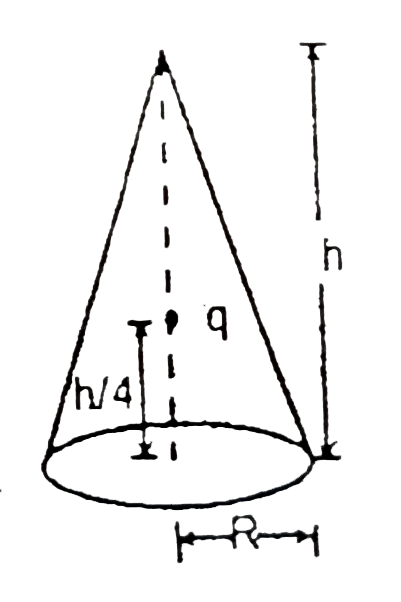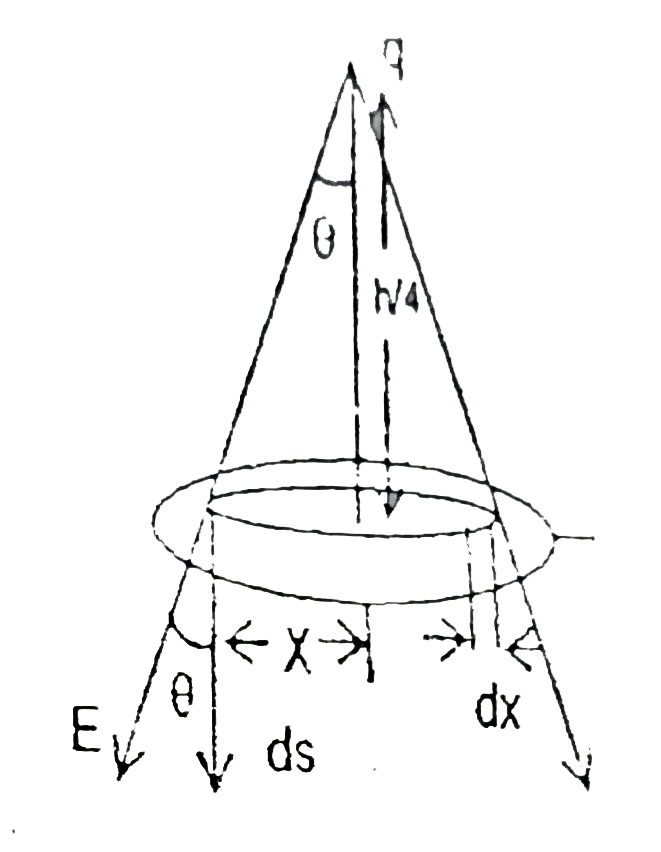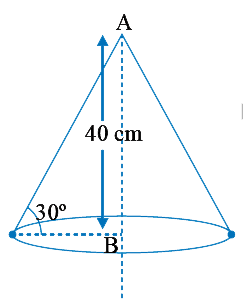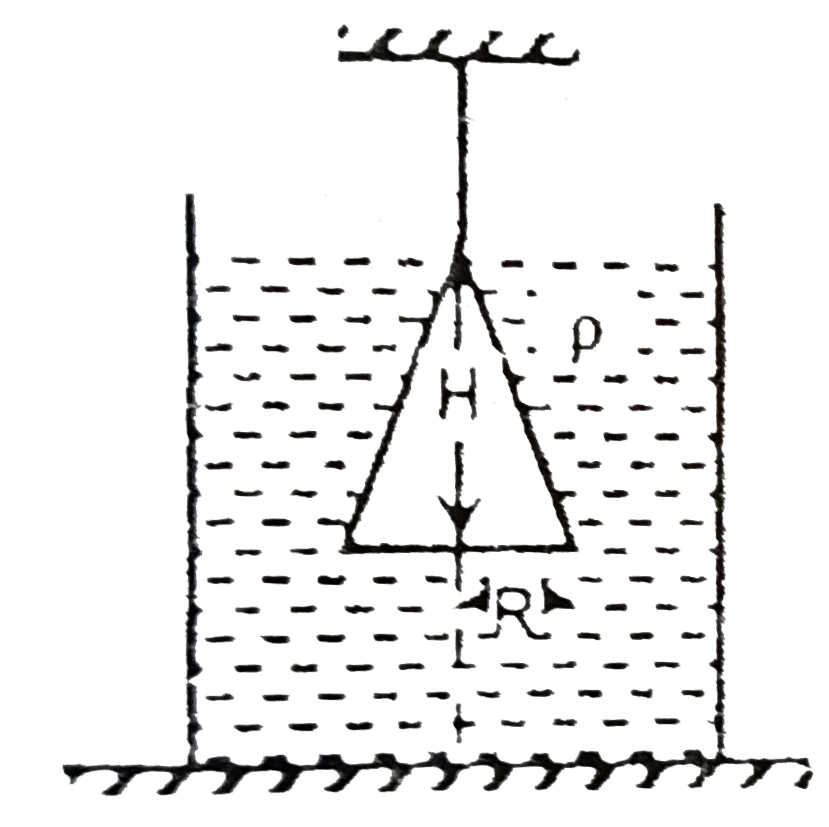A charge q is placed at a height h4 from the base of a cone of height h and radius R as shown in figure. Calculate the flux linked with the curved surface of the cone.

ϕ=ϕc+ϕp=q/ε0
ϕ→ total flux linked
ϕc→ flux linked with curved surface
ϕp→ flux linked with plane surface
ϕp=q2(1−cosϕ)=q2⎛⎜
⎜⎝1−h/4√R2+h216⎞⎟
⎟⎠
∴ϕC=qε0−ϕp
⇒ϕc=qε0(12+h2√16R2+h2)

Similar Questions
If a charge q is placed at the centre of a hemispherical body as shown below then the flux linked with the curved surface is
 View Solution
View SolutionThe height of a cone is 16 cm and its base radius is 12 cm. Find the curved surface area and the total surface area of the cone
View SolutionA uniform solid cone of height 40 cm is shown in figure. The distance of centre of mass of the cone from point B (centre of the base) is :
 View Solution
View SolutionA cone of height 4 cm is melted and recast into a sphere of diameter 8 cm .Find the radius of the base of the cone.
View SolutionThe radius of base of a cone is r and height is h. Find its volume.
View SolutionA cone of radius R and height H, is hanging inside a liquid of density ρ by means of a string as shown in figure. The force due to the liquid acting on the slant surface of the cone is
 View Solution
View SolutionThe radius of a cone is 3cm and vertical height is 4cm. Find the area of the curved surface.
View SolutionThe radius of a cone is 3cm and vertical height is 4cm. Find the area of the curved surface.
View SolutionA buoy is made in the form of hemisphere surmounted by a right cone whose circular base coincides with the plane surface of hemisphere. The radius of the base of the cone is 3.5 metres and its volume is two-third of the hemisphere. Calculate the height of the cone and the surface area of the buoy, correct to two places of decimal.
View SolutionThe radius of a cone is 5cm and vertical height is 12cm. Find the area of the curved surface.
View Solution

